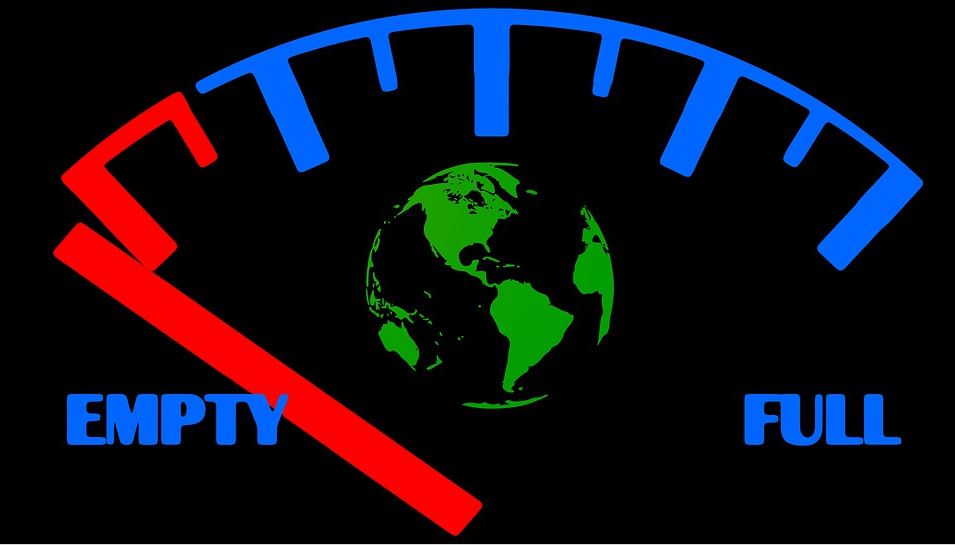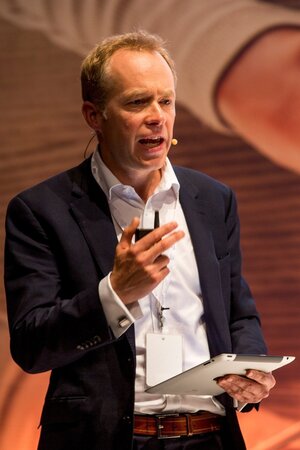- Apr 27, 2020
- b toumi
- Business Reports
- 0 Comments
The global COVID pandemic and the oil price drop has driven an unprecedented challenge for the oil and gas industry. Whilst the crisis will inevitably change our way of life, some fundamentals will remain true in a post-COVID world.
Energy demand will recover (although peak oil will likely be accelerated), the climate crisis will be back in focus, and the industry will be under arguably greater pressure to decarbonise.
In today’s uncertain and difficult world, gas flaring capture presents a tremendous opportunity. Projects that capture wasted gas are a “quick win” that helps us to meet energy demand, generate revenues, reduce emissions and improve air quality. To ensure we deliver when the crisis is over, the time to prepare is now.
By Mark Davis, CEO of Capterio

Modern society is disrupted on a phenomenal scale, public health systems are straining and more than 2 billion are under lock down. Stock markets have crashed and most economies are heading towards recession. To say nothing of the tremendous human cost. COVID-19 has already had an unprecedented impact, and the worst is probably yet to come in many countries.
The oil and gas industry is reeling from the major demand shock that is resulting from the necessary “physical distancing” policies. Dramatic reductions in air and road travel (and more) have led to predictions of up to 25 million barrels per day (a 25% reduction) lower demand for crude in April. The COVID-driven lower demand for crude is so large that even the 2-3 million barrels per day of supply overhang resulting from the price war that started on 7th March between Russia and Saudi Arabia is somewhat a secondary phenomenon. And the net result is that Brent crude recently hit its lowest level in 18 years, at below $23.
The oil and gas industry is being tested to its limits. Whilst the pandemic is forcing the industry to put in place perhaps untested continuity plans, it knows what to do when prices are low. Some production is shut-in, refineries are slowing output (and will go on early maintenance), storage tanks are swelling, CAPEX is already cut by close to $100 billion, and dividends and salaries are under review. Sadly, the first wave of bankruptcies and job cuts are already happening, but with potentially negative oil and gas prices looming, more pain is inevitable.
In a post-COVID world, the focus on sustainability and waste reduction will be even sharper – but good news, gas flaring reduction is at least one pathway that gives opportunity
Getting through the pandemic – and defining its exit strategy – is the number one priority globally. One (of the very few) upsides that we have heard is that gas flaring in the US Permian is on the decline. Another is that many many cities report lower emissions and cleaner air: our climate crisis has a small respite. When we revert to the “new normal” it will be important to use the moment wisely as we consider how we reshape our industry.
In a post-COVID world, many of the fundamentals of energy will remain – we will continue to have strong (and growing) demand for energy, and fossil fuels will be the bedrock for a long time. However, oil production may peak earlier (driven by both a potentially lower demand and a less-attractive investment case). And the energy transition will likely be back in focus, even potentially more sharply given that now millions of people have got accustomed to better air quality (something particularly important when facing a respiratory disease). With the reduction in capex and with it drilling new wells, the role of gas to power the transition will probably be accelerated, and so too will be the importance of lowering emissions (of CO2, methane, and of particulates). Gas flaring reduction offers hope as it can help with each.
In a post-COVID world, tackling gas flaring will be a valuable tool to create value and reduce emissions. Globally, some 273 BCM (26 bcf/day) – half of Europe’s total gas consumption – is flared, vented and leaked, a tremendous waste and carbon load. Gas flaring projects can also help us to deliver intermediate targets: milestones that step us up to our 2050 commitments. There are likely hundreds of material flare capture projects around the world that all could be delivered with the right investment, technology, and commercial structures.
By stopping gas flaring alone (some 145 BCM per year), the world can create $27 billion in revenues, add 2.8 million boe/d of production at low-cost and low-risk, and reduce emissions by 1.2 billion tonnes of CO2e per year, significantly contributing to Paris’s NDCs.
In a post-COVID world (due to cuts), CAPEX will be short in supply, so it will therefore be important for the industry to identify new sources of third-party capital for flare investments. Indeed, we frequently hear that companies would like to address flaring but are unable to raise (or justify) capital deployment to such projects. Yet there is a growing cohort of institutions and organisations (including Capterio) that are willing to finance such investments, not only because investments in flare capture projects are attractive in their own right (especially if win-win commercial structures can be established), but also because they represent some of the most effective ways to reduce emissions per invested dollar.
In a world of low oil and gas prices, it will be even more important that gas is not wasted and that every molecule is monetised, particularly so for National Oil Companies who are, after all, viewed as the custodians of their natural resources and the source of significant government revenues.
In these countries – and others – flare gas capture projects can fill the inevitable void in the near term that will result from the cancellation or deferment of other capital projects and drilling, replacing reserves with limited technical risk (see a related article).
We’ve analysed the boost that flare capture projects could give to national economies and hydrocarbons sectors. Figure 1 highlights the increase in gross domestic product (GDP) and domestic gas production that could be delivered by capturing flared, vented and leaked gas. These indicators are especially important given that the OECD is projecting (should the coronavirus outbreak be long-lasting and intensive) that annual global GDP would fall to 1.5% and, many industry commentators are expecting a rapid drop in non-OPEC supply following recent CAPEX cuts.

Figure 1: Percentage boost to domestic gas production and GDP by productively utilising gas currently flared, vented and leaked
Why it pays … and how companies like Capterio can help
Flare capture projects should stack up competitively against many other investment options at oil and gas companies, especially if structured correctly. They are one of the largest decarbonisation opportunities the oil and gas industry has – and in realising it, real commercial value can be created at negative abatement costs. In this time of the dual crises of a global pandemic and oil price crash, our industry must play our part to continue to meet society’s energy needs in the present. But we must also use the moment wisely to invest, prepare and reshape our industry for a more sustainable future. Let’s work together.
Capterio is an agile project developer focused on monetising waste gas in oil & gas energy systems. We build solutions to quickly capture waste gas and utilise it, taking it to pipelines, injecting it (for storage, enhanced recovery or disposal), converting it to power, liquids (e.g. CNG, LPG, GTL, LNG, etc) or other creative solutions. We screen and source opportunities powered by our Global Flaring Intelligence Tool (GFIT), we select and procure technology, we negotiate commercial contracts, we provide project financing, and oversee construction and operations. We bring together assets together with technologies, know-how and financing to deliver on-the-ground, real-world, safe and reliable solutions.
To contact the author, please email [email protected]
DR MARK DAVIS (CEO, Capterio)
Mark has over 20 years of experience in the upstream and downstream oil and gas industry and has worked in over 30 countries. Mark worked in upstream exploration and business development at Shell International, before joining McKinsey & Company where he led many projects on strategy, operations and organisation. Mark then became the CEO of the downstream oil and gas quality assurance business at Intertek, where he was responsible for global operations and strategy in over 100 countries. Mark has a MA in Natural Sciences from Cambridge, a PhD from Liverpool, an MBA from IMD and is a Fellow of the Geological Society.

